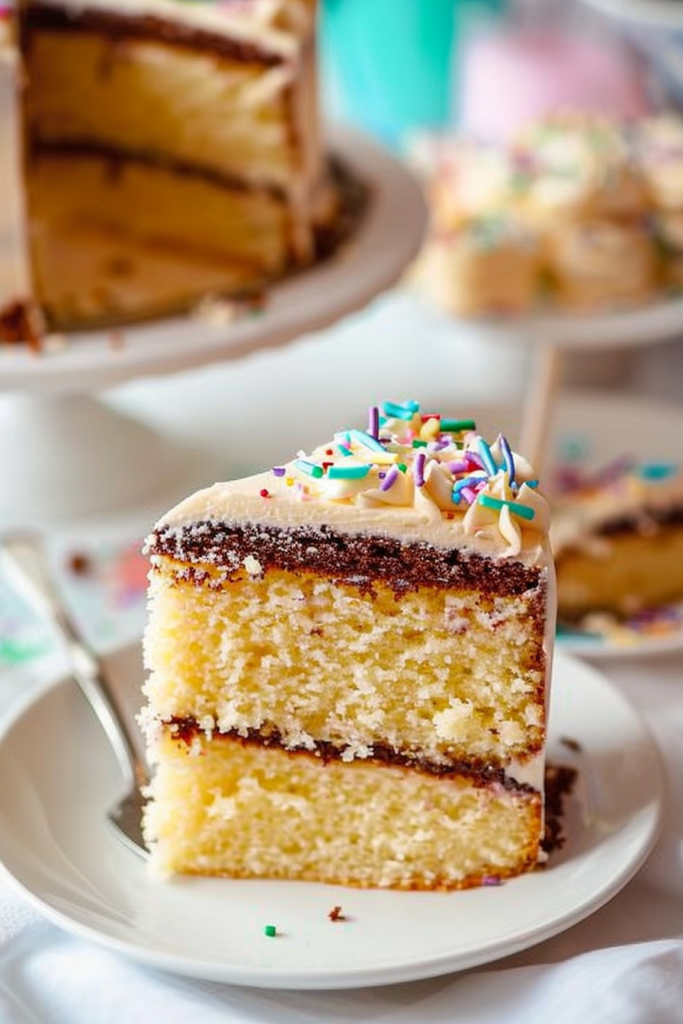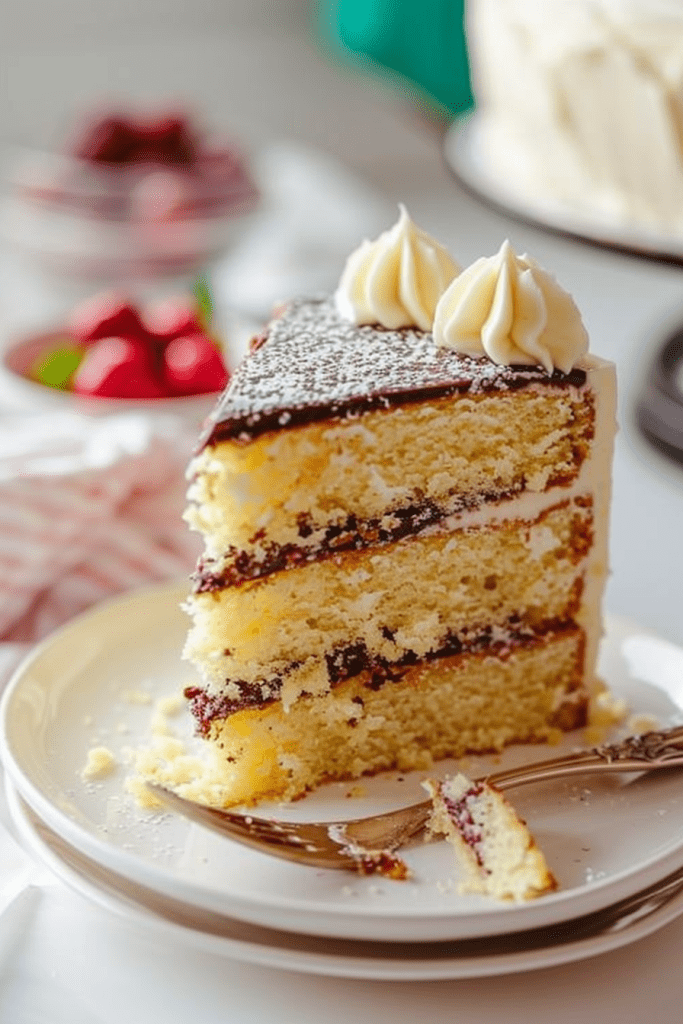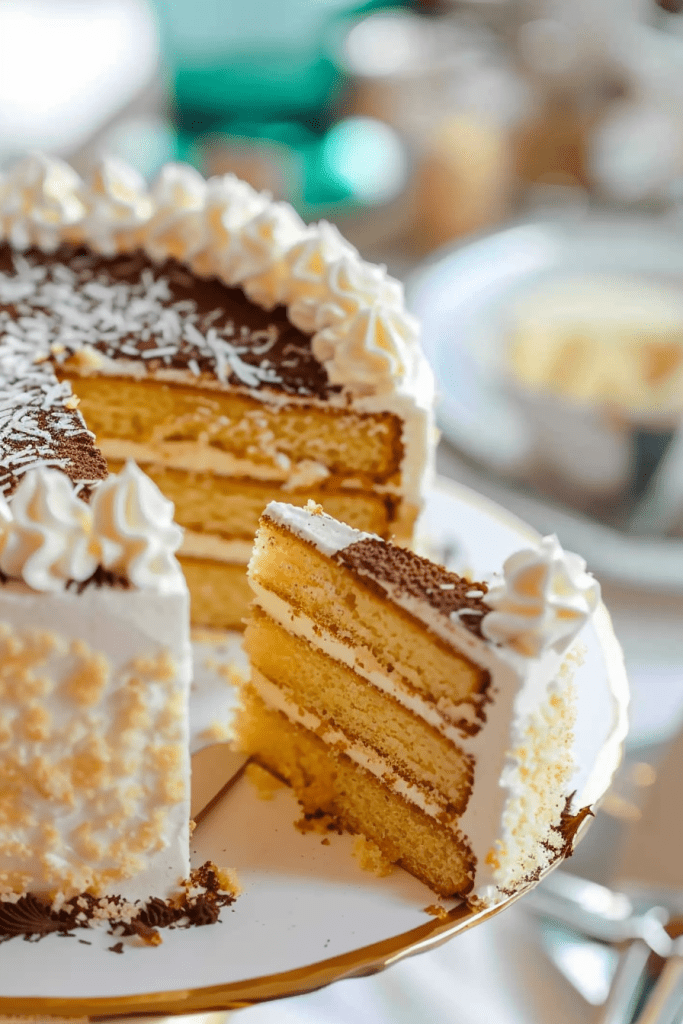Are you on the quest for the perfect classic yellow cake recipe that’s as fluffy and moist as a boxed mix but with that delightful homemade taste? Look no further! As a seasoned baker who has experimented with countless yellow cake recipes, I understand the struggle of finding the ideal balance between texture and flavor.
Yellow cake, with its rich buttery-vanilla essence, has a special place in the hearts of many dessert enthusiasts. The challenge lies in creating a homemade version that rivals the convenience of a boxed mix without compromising on taste. Through meticulous testing and tasting, I’ve uncovered the secrets to achieving a plush, flavorful yellow cake that will leave you craving for more.
Join me on a culinary journey as we explore the nuances of classic yellow cake recipes. From the perfect crumb texture to the heavenly aroma of vanilla, I’ll guide you through the intricacies of baking the ultimate yellow cake that will elevate your baking game to new heights.

The Origins of Classic Yellow Cake
A Brief History
Delving into the past of classic yellow cake uncovers a rich history intertwined with American culinary traditions. The iconic yellow cake’s origins trace back to the 19th century when baking powder revolutionized cake-making, resulting in lighter and airier cakes compared to earlier versions. The use of butter, sugar, eggs, and flour gave birth to a cake with a golden hue, distinct from its white or chocolate counterparts. Over time, this simple yet flavorful cake became a beloved treat in households across America, symbolizing comfort and sweetness in every bite.
Why It’s a Staple in American Desserts
Classic yellow cake holds a special place in American desserts for several reasons. Its versatile and adaptable nature allows for numerous variations and pairings, making it a go-to choice for celebrations and everyday indulgences. The buttery, vanilla-infused crumb offers a perfect canvas for various frostings, fillings, and decorations, adding to its widespread popularity. Whether enjoyed on its own or as part of a layer cake creation, the classic yellow cake embodies the essence of traditional baking in American kitchens, bringing joy and nostalgia with each slice.
Key Ingredients for Classic Yellow Cake Recipes

Flour Types and Their Impact on Texture
In classic yellow cake recipes, the choice of flour plays a crucial role in determining the texture of the final cake. All-purpose flour, commonly used in these recipes, provides a balance of protein and starch necessary for a tender crumb. Alternatively, cake flour, with its lower protein content, yields a lighter and softer texture, ideal for achieving a delicate and fluffy cake.
The Role of Eggs and Butter in Achieving Richness
Eggs and butter are key ingredients in classic yellow cake recipes, contributing to the richness and flavor profile of the cake. Eggs provide structure, moisture, and richness, while butter adds a luxurious and buttery taste. The combination of these ingredients creates a moist and decadent cake with a velvety crumb that melts in your mouth, making every bite a delightful experience.
Baking Techniques and Tips
How Oven Temperatures Affect the Cake’s Texture
When it comes to baking a classic yellow cake, understanding how oven temperatures can impact the final texture is crucial. A too hot oven can lead to uneven baking, causing the cake to rise too quickly and then collapse. On the other hand, a too cool oven may result in a dense and undercooked cake. To achieve the perfect texture, I always recommend preheating the oven properly and using an oven thermometer to ensure accuracy.

Variations of the Classic Yellow Cake
Adding Layers and Frostings
When considering variations for the classic yellow cake, adding layers and experimenting with different frostings can elevate the dessert to new heights. Layering the cake with decadent fillings like pastry cream, fresh fruits, or even a creamy ganache can bring a delightful twist to the traditional recipe. For instance, stacking alternating layers of cake and fruit preserves can introduce a burst of flavor in every bite. Similarly, incorporating various frostings like chocolate ganache, cream cheese frosting, or a citrus-infused glaze can transform the classic yellow cake into a gourmet delight fit for any occasion.

Gluten-Free and Vegan Alternatives
For those with dietary restrictions or preferences, exploring gluten-free and vegan alternatives for the classic yellow cake opens up a world of possibilities. Utilizing gluten-free flour blends or almond flour in place of traditional wheat flour can result in a moist and tender crumb without compromising on taste. Additionally, substituting ingredients like eggs with flax eggs or applesauce and using non-dairy milk can create a vegan-friendly version of the beloved classic. By incorporating plant-based ingredients and innovative baking techniques, individuals can enjoy a delicious yellow cake that caters to a variety of dietary needs while maintaining the essence of this timeless dessert.
Conclusion
Classic yellow cake recipes are a timeless delight that offer endless possibilities for creativity and personalization. From mastering the perfect texture to exploring a variety of flavor combinations, there’s something truly special about baking this beloved dessert. Whether you prefer a traditional approach or enjoy experimenting with innovative twists, the classic yellow cake serves as a versatile canvas for culinary exploration. With the option to customize fillings, frostings, and even adapt recipes to accommodate dietary preferences, this iconic treat continues to captivate taste buds and bring joy to those who indulge in its simple yet satisfying charm. Embrace the art of baking and savor the magic of crafting your own version of the classic yellow cake to share with family and friends.
